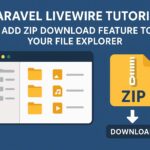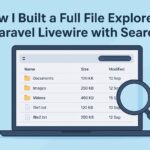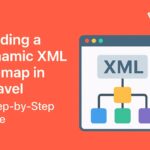Techno Workshop provides technical solutions about different technologies like PHP, MySQL, PostgreSQL, Bootstrap Front-end Framework, JQuery, GIS, JasperServer, and PHP frameworks like Laravel, Codeigniter, CakePHP, etc. It also provides tutorials for Ajax, APIs, CURL, Composer Packages, etc. If you cannot find anything, you can also search for tutorials in the search box below.
- Laravel Livewire Tutorial: Add ZIP Download Feature to Your File ExplorerLearn how to add a ‘Download All as ZIP’ feature to your Laravel Livewire file explorer. Compress all files in a folder – grouped by type – into a single ZIP using Laravel Storage and PHP ZipArchive.
- How I Built a Full File Explorer in Laravel Livewire with SearchLearn how to create a complete file explorer in Laravel using Livewire and Bootstrap – with folders, subfolders, and document search. Step-by-step tutorial with code.
- How to Reset a Forgotten phpMyAdmin PasswordForgot your phpMyAdmin password? Follow this simple guide to reset your MySQL root or user password and regain access to phpMyAdmin on localhost or server.
- How to Use TinyMCE with Livewire and Sortable.js in a Dynamic Form BuilderLearn how to integrate TinyMCE with Livewire and Sortable.js in a dynamic form builder. Build interactive forms with drag-and-drop and rich text editing in Laravel.
- Mastering CSS Media Queries: Optimizing for Retina & Touch DevicesLearn how to use advanced CSS media queries to optimize sliders for Retina iPhones, high-DPI devices, and hybrid touchscreens.
- From Static to Dynamic: Creating a Powerful Form Builder with LivewireLearn how to build a dynamic form builder in Laravel Livewire with repeaters, file uploads, and component-based fields. Step-by-step guide with code examples.
- Building a Dynamic XML Sitemap in Laravel: A Step-by-Step GuideLearn how to create a dynamic XML sitemap in Laravel from a list of links. Step-by-step guide with controller, Blade template, and route setup for your web app.
- Boost Your Filament Resources with Excel Export in MinutesLearn how to add an Export to Excel button in Filament using Laravel Excel. Includes filter-aware exports and reusable QueryExport class.
- Filament Table Actions: Pro Tips Every Developer Should KnowDiscover advanced tips to customize Filament table actions in Laravel. Learn how to auto-mutate data, load custom views in modals, and create state-toggling actions with confirmation and notifications.
- Mastering Version Control in Laravel Filament: Build Your Own Rollback SystemLearn how to implement a powerful versioning and rollback system in Laravel using Filament. Track model changes, record history, and rollback updates, deletions, or creations with ease.








